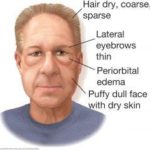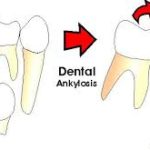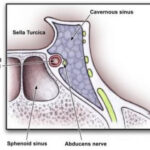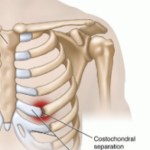What is Groin?
Groin is the junction area of the hip between the stomach and thigh. This part of the body is technically known as the medial compartment of the thigh that consists of the adductor muscles of the hip or commonly known as the groin muscles.
What is Groin Pain?
Groin pain refers to the feeling of discomfort in the area where the abdomen ends and the leg begins pulling or the groin muscles are pulled to each other. When the groin muscles are stressed at higher intensity due to stretching process of thigh muscles beyond their capacity, it would result in the ripping of some muscular parts and tissues in the groin area resulting in swelling and pain.
The groin muscles have adductors present in the upper thigh region. These adductor muscles that makes the groin consist of adductor brevis, adductor longus, adductor magnus, gracilis, and pectineus. Their main function is to adduct the hip joint. These adductors significantly function in most of the physical daily activities such as sitting, walking, running, dancing etc. 

Source – epainassist.com
When the leg muscles contract it causes to the pulling of the muscles in a normal circumstances. However, when the intense contraction occurs it will create strain in the groin muscles which normally experience as pain in the thigh region.
On the contrary, when the adductor muscles keep flexing its range of motion can reduce the risk of developing strain muscles. In fact, a published study in 2009 issue of “Journal of Strength and Conditioning Research”, reported that a strong correlation was observed between a lack of hip adductor flexibility and an increased risk of hip injuries among the soccer players and other athletes.
When the leg muscle is subjected to an extreme range of motion like the soccer player intensively kicks the ball targeting the goal, the risk of a groin pulls increases if the balance doesn’t exist between the hamstring and adductors. This means that stretching regularly can reduce of developing strain muscles.
Causes
There are reasonable items why groin pain occurs. Most common causes particularly for the sports enthusiast are strain of muscle, ligaments or tendons in the groin area.
However, some possible less condition can also contribute to feel the pain. See listed items below;
Swollen Glands or lymph node
(may enlarged if there is an occurrence of infection in the surrounding body part).
Obstructive Urophathy
Condition where the urine cannot drain through the ureter which causes to return in the kidney resulting to hydronephrosis (swollen kidney).
Kidney Stones
stones that pass in the ureter causing discomfort and pain while urinating.
Hernia
It occurs when internal tissue is displaced and swells through the wall of the cavity containing it. Usually happen at a weak spot of the abdominal wall.
Epididymitis
A condition that a coiled tube or the epididymis which stores sperm and urine become inflamed. Its primary cause is bacterial infection that takes place during sexual intercourse like gonorrhea or chlamydia.
Orchitis
It occurs when one or both of the testicles are inflamed.
Prostatitis
Can affect male of all ages, a condition wherein the prostate gland are inflamed. This is due to an infection and other underlying causes.
Testicular Cancer
A condition that mostly affect men ages of 15-34 years old. This disease is classified as malignant tumor of the male sex organ or known as testicles that normally produces the testosterone.
Sprains and strains
As we all know intensive stretch of muscles or pulling each muscle apart causes pain the groin area.
Abdominal Aortic Aneurysm
This underlying cause can contribute to pain sensation of groin. A condition that occurs when the lower part of the aorta is enlarged.
The aorta is primary blood vessels that responsible for supplying blood in all part of the body. When ruptures of these vessels occur, it may result excruciating pain in the abdomen area and worst leading to death.
Legg-Calves-Perthes’ Diseases
It is a childhood hip disorder instigated by a disruption of blood flow to the ball of the femoral head. When there is a lack of blood circulating femoral head, it causes bone death resulting to the stop of growth of the bone.
- Infections causing lumps, bumps or swelling in the groin area
- Skin infection in the scrotum area.
- Torsion of a testicle (Twisted Testicles)
- Stress fractures of the hip- are injuries to the bone that result from overuse activity. This fracture is caused by repetitive micro-trauma to the bone.
- Spine problem – condition that located in the back near the lower ribs region can pinch the nerves that travel through the groin area which results to the groin and thigh pain.
Diagnosis
The Doctors are typically using a multi-tiered approach in order to diagnose the root cause(s) of groin pain such as the following;
Physical Examination
This examination is superbly useful by all medical practitioners since it helps them to determine the general status of a particular patient health.
The physical examination for groin pain conducted by your doctor is simply evaluating the symptoms and asks your recent physical activities. Therefore, the doctor will perform physical examination of the groin area together with other test if it is necessary.
Diagnosis Imaging
This diagnostic test specifically x-ray or ultrasound are typically used primarily, based on the doctor’s probable suspected diagnosis. The Magnetic resonance Imaging or MRI is usually in need to diagnose soft tissue groin injuries and other internal fractures.
Blood Test
This laboratory test performs when individual is suspected for an infection internally. Occasionally, some classifications of groin injury involve secondary infection and other systemic symptoms, and most of the time health experts conduct a complete blood counts testing when diagnosing groin injuries.
Other laboratory testing that doctors may use are as follow;
- Urine test or Urinalysis
- Groin Ultrasound
- Bone Scanning
- Arteriography
- Venography or Doppler Ultrasound
- X-ray
- CT-Scan
- Intravenous Pyelogram
Treatment
Groin pain is not a life threating condition but it is still depend on the underlying causes. Generally, sensing the pain under your groin will just heal on its own. You just need to give some time to it to rest and recover to its own. In order to speed up the healing process, you might want to consider some tips to lessen the pain;
Cold compress
Putting ice pack or something cold in the pain area of your body may relief and reduce the pain. Health experts are highly recommended doing it for 20 to 30 minutes every after 3 to 4 hours for 2 or 3 days, until the pain is gone.
Pain killers
Taking pain killers or Nonsteroidal anti-inflammatory drugs (NSAIDs) such as ibuprofen and naproxen will alleviate pain and swelling. However, too much intake of these drugs without prescription coming from the doctor will also result to some complication such as kidney damage or rupture of some internal organs. Therefore, always seek first for your doctor before taking them.
Bandage tape
Using this kind of technique will help to lessen the pain. Simply, role your thigh with an elastic bandage or tape.
Perform Gentle Groin Stretching
This exercise can be performed once the swelling has subsided and the pain is manageable and controlled. During the first attempt, stretch your leg and thighs slowly and gently then after some time increase the range of motion in the hip and inner thigh. Perform the series as your progress.
Sources:
- https://en.wikipedia.org/wiki/GroinTre
- http://www.vitaphysical.com/what-we-treat/groin-pain/
- http://www.mayoclinic.org/symptoms/groin-pain/basics/causes/sym-20050652
- http://www.webmd.com/men/groin-pain
- http://www.medicinenet.com/groin_pain/symptoms.htm
- https://medlineplus.gov/ency/article/003111.htm
- http://diseasespictures.com/groin-muscle/
- https://flexistretcher.com/blogs/news/14230873-stretching-the-adductors-is-critical-to-dance-and-sports-performance
- http://www.sportsinjuryclinic.net/sport-injuries/hip-groin-pain/groin-pain/groin-strain-symptoms-diagnosis
- http://www.webmd.com/fitness-exercise/groin-pull#1
- https://www.verywell.com/five-tips-for-treating-groin-pain-3120416







I have noticed you don’t monetize epainbody.com, don’t waste your traffic, you can earn additional bucks every month with new monetization method.
This is the best adsense alternative for any type of website (they
approve all sites), for more details simply search in gooogle: murgrabia’s tools
I have noticed you don’t monetize epainbody.com, don’t waste your traffic, you can earn additional cash every month
with new monetization method. This is the best adsense alternative
for any type of website (they approve all websites), for more details simply search in gooogle: murgrabia’s tools